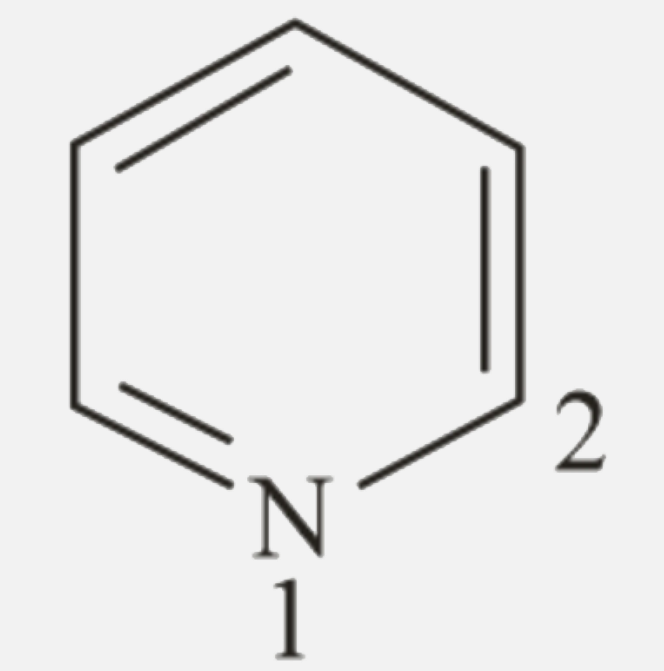Identify the characters of mustard, Chilli, Cauliflower respectively
Inferior ovary, zygomorphic flower, cormb
Whorled phyllotaxy, unilocular ovary, production of flowers at the same node of peduncle
Hypogynous flower, unilocular ovary, corymb
Axile placentation, tricarpellary gynoecium, sessile flowers.
The correct Answer is:C
To identify the characters of mustard, chili, and cauliflower, we can summarize the key features of each plant in a structured manner. Here’s a step-by-step breakdown:
Step 1: Identify the Characters of Mustard
- Ovary Type: Mustard has a superior ovary.
- Flower Symmetry: The flower of mustard is actinomorphic (not zygomorphic).
- Inflorescence Type: The inflorescence in mustard is racemose (not corium).
- Phyllotaxy: The arrangement of leaves (phyllotaxy) in mustard is alternate.
- Placentation: Mustard exhibits marginal placentation.
- Flower Type: The flowers are hypogynous.
Step 2: Identify the Characters of Chili
- Ovary Type: Chili has a unilocular ovary.
- Flower Symmetry: The flower of chili is actinomorphic (not zygomorphic).
- Inflorescence Type: The inflorescence in chili is not corium; it is typically solitary or in clusters.
- Phyllotaxy: The arrangement of leaves in chili is also alternate.
- Placentation: Chili has axile placentation.
- Flower Type: The flowers are generally hypogynous.
Step 3: Identify the Characters of Cauliflower
- Ovary Type: The ovary type in cauliflower is superior.
- Flower Symmetry: The flower of cauliflower is actinomorphic.
- Inflorescence Type: The inflorescence in cauliflower is corymbose.
- Phyllotaxy: The arrangement of leaves in cauliflower is alternate.
- Placentation: Cauliflower exhibits marginal placentation.
- Flower Type: The flowers are typically suicidal.
Summary of Characters:
- Mustard: Superior ovary, actinomorphic flower, alternate phyllotaxy, marginal placentation, hypogynous flower.
- Chili: Unilocular ovary, actinomorphic flower, alternate phyllotaxy, axile placentation, hypogynous flower.
- Cauliflower: Superior ovary, actinomorphic flower, alternate phyllotaxy, marginal placentation, corymbose inflorescence, suicidal flowers.
Final Answer:
- Mustard: Superior ovary, actinomorphic, hypogynous.
- Chili: Unilocular ovary, actinomorphic, hypogynous.
- Cauliflower: Superior ovary, actinomorphic, corymbose inflorescence, suicidal flowers.
---
- Ovary Type: Mustard has a superior ovary.
- Flower Symmetry: The flower of mustard is actinomorphic (not zygomorphic).
- Inflorescence Type: The inflorescence in mustard is racemose (not corium).
- Phyllotaxy: The arrangement of leaves (phyllotaxy) in mustard is alternate.
- Placentation: Mustard exhibits marginal placentation.
- Flower Type: The flowers are hypogynous.
- Ovary Type: Chili has a unilocular ovary.
- Flower Symmetry: The flower of chili is actinomorphic (not zygomorphic).
- Inflorescence Type: The inflorescence in chili is not corium; it is typically solitary or in clusters.
- Phyllotaxy: The arrangement of leaves in chili is also alternate.
- Placentation: Chili has axile placentation.
- Flower Type: The flowers are generally hypogynous.
- Ovary Type: The ovary type in cauliflower is superior.
- Flower Symmetry: The flower of cauliflower is actinomorphic.
- Inflorescence Type: The inflorescence in cauliflower is corymbose.
- Phyllotaxy: The arrangement of leaves in cauliflower is alternate.
- Placentation: Cauliflower exhibits marginal placentation.
- Flower Type: The flowers are typically suicidal.
- Mustard: Superior ovary, actinomorphic flower, alternate phyllotaxy, marginal placentation, hypogynous flower.
- Chili: Unilocular ovary, actinomorphic flower, alternate phyllotaxy, axile placentation, hypogynous flower.
- Cauliflower: Superior ovary, actinomorphic flower, alternate phyllotaxy, marginal placentation, corymbose inflorescence, suicidal flowers.
- Mustard: Superior ovary, actinomorphic, hypogynous.
- Chili: Unilocular ovary, actinomorphic, hypogynous.
- Cauliflower: Superior ovary, actinomorphic, corymbose inflorescence, suicidal flowers.
Topper's Solved these Questions
- FAMILIES OF FLOWERING PLANTSBOOK - DINESH PUBLICATION ENGLISHCHAPTER - FAMILIES OF FLOWERING PLANTSEXERCISE - CYG
10 Videos
- FAMILIES OF FLOWERING PLANTSBOOK - DINESH PUBLICATION ENGLISHCHAPTER - FAMILIES OF FLOWERING PLANTSEXERCISE - BRAIN TEASERS -II
97 Videos
- FAMILIES OF FLOWERING PLANTSBOOK - DINESH PUBLICATION ENGLISHCHAPTER - FAMILIES OF FLOWERING PLANTSEXERCISE - BRAIN TEASERS -II
97 Videos
- EXCRETORY PRODUCTS AND THEIR ELIMINATIONBOOK - DINESH PUBLICATION ENGLISHCHAPTER - EXCRETORY PRODUCTS AND THEIR ELIMINATIONEXERCISE - Check your graps
10 Videos
- FLOWERBOOK - DINESH PUBLICATION ENGLISHCHAPTER - FLOWEREXERCISE - MULTIPLE CHOICE
258 Videos
Similar Questions
Knowledge Check
Red rot of sugarcane and white rust of mustard are respectively caused by:
AColletotrichum and Albugo candidaBColletotrichum and FusariumCPythium and PhytophthoraDAlbugo candida and Puccinia graminis
A flower of mustard is
View SolutionIdentify the character which is absent in Fucus
View SolutionCharcter not found in mustard is
View SolutionIdentify the correct hybridizations of atom 1 and 2, respectively, in the following structure.

View SolutionA mixture of mustard oil and water forms
View SolutionBlack rot of mustard is caused by
View SolutionIdentify the character which is not related to mesenchymal connective tissue
View Solution
